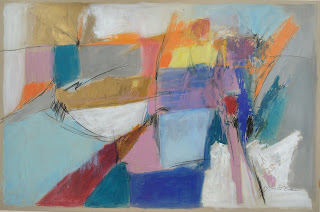Inside the Studio of Debby Brisker Burk: Materials: The Kitchen Sink! For mixed media/acrylic painters.
I. The Kitchen Sink--utilizing a wide variety of materials need to serve the following purpose:
- What do you want to say?
- Materials are an extension of your artistic purpose.
- Materials are fun but it's essential to think, sketch, write on this topic. Take photos of inspiring scenes, ask yourself what are you drawn to? Materials and subject matter go hand in hand.
- Be an investigative reporter to your desires, thoughts and dreams on your artistic expression's journey!
II. Examples of my materials:
- Acrylic heavy body paints by: by Nova Colors, Golden Acrylics, Liqutex Acrylics
- Caran'dache water soluble crayons
- artist pencils, 2 b-6B, charcoal pencils, vine and soft and hard charcoal sticks
- Canvas: heavy duty, unprimed and pre stretched, heavy duty-various sizes eg. Fredrix brand
- Drawing Papers, Strathmore sketch pads,Arches Watercolor paper
- Masterson Palette (for acrylic paint with cover)--covered with trash bags and ties (for storing when not in use) Will last approximately 7- 10 days.
- Mediums: Golden brand: retarder, open acrylic thinner, liquid glazing gloss, molding paste (extends the acrylic paint)
- The simplest one to start with is Golden's liquid glazing gloss(the use of the many mediums on the market is a subject for another blog!)
- brushes: eg., Simply Simmons, 10,12, 14,16 rounds, Daniel Smith 1", 2" , 3"flats, sponge brushes, 1"-3", plaza brand etc.
- two easels, 3 folding tables, comfortable chair when not standing
- music!







